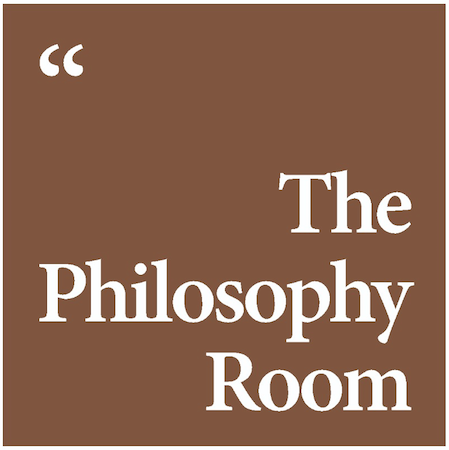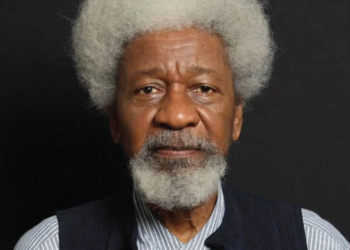Psychological Warfare
1) J.F.C Fuller, Father of Psychological Warfare
Major General J.F.C. Fuller, a renowned British military officer and strategist, is often regarded as the “Father of Psychological Warfare.” His contributions to the field of military theory and strategy have left an indelible mark on the development and understanding of psychological warfare. Fuller’s work primarily focused on the concepts and theories that he used to define and describe psychological warfare.
One of Fuller’s key contributions to psychological warfare was the conceptualization of the “indirect approach.” He believed that warfare should not be solely about brute force but should incorporate psychological elements to demoralize the enemy and weaken their resolve. Fuller argued that a well-planned psychological campaign could save lives and resources by convincing the adversary to surrender without engaging in full-scale combat.
Fuller also emphasised the importance of understanding the human mind in warfare. He believed that by exploiting an enemy’s fears, doubts, and vulnerabilities, it was possible to create psychological pressure that could disrupt their decision-making process. This perspective was instrumental in laying the foundation for the application of psychology in military operations.
Furthermore, Fuller advocated for the strategic use of propaganda as a tool of psychological warfare. He recognised the power of information and the manipulation of beliefs to shape public opinion, influence the morale of both military personnel and civilians, and ultimately, impact the outcome of conflicts. This strategic approach to propaganda became a cornerstone of modern psychological warfare strategies.
In his writings, Fuller also highlighted the need for comprehensive intelligence gathering and analysis as a fundamental aspect of psychological warfare. Accurate information was seen as crucial for identifying an adversary’s psychological vulnerabilities and crafting effective psychological operations.
Fuller’s work played a pivotal role in developing the understanding that psychological warfare was not limited to overt military actions but encompassed a broad range of activities, including subversion, espionage, and the dissemination of disinformation. This holistic approach laid the groundwork for contemporary psychological warfare doctrines, which encompass a wide array of non-kinetic methods to achieve strategic objectives.
2) Psychological Operations
Psychological operations (PSYOP) play a vital role in modern warfare and conflict management. These operations are designed to influence the thoughts, emotions, and behaviours of targeted individuals, groups, or populations. To effectively grasp the concept of psychological operations, it’s essential to understand the three key elements: strategic, operational, and tactical.
At the strategic level, psychological operations encompass long-term planning and the formulation of overarching objectives. Strategic PSYOP aims to shape the perceptions and attitudes of entire populations or governments. It focuses on achieving broad, enduring goals, such as changing a nation’s foreign policy or promoting certain values. At this level, psychological operations align with a country’s foreign policy and national security strategy. They often involve the use of mass media, diplomacy, and international alliances to influence the beliefs and decisions of foreign governments and societies.
Operational psychological operations take a more medium-term perspective. They are geared towards achieving specific military or political objectives in a given theatre of operations. Operational PSYOP seeks to support and enhance broader military campaigns by exploiting psychological vulnerabilities within the target population. This might involve disseminating propaganda, conducting deception operations, or conducting civil affairs initiatives. These activities are designed to influence the behaviour of groups or communities within a specific region, helping to create conditions favourable to the achievement of operational goals.
Finally, tactical psychological operations are the most immediate and on-the-ground component of PSYOP. They are conducted by military units in direct contact with the enemy or the target population. Tactical PSYOP aims to gain a psychological advantage in the heat of battle or within specific geographical areas. These operations often involve leaflet drops, loudspeaker broadcasts, and other forms of communication aimed at enemy combatants or local civilians. The goal is to create confusion, reduce the enemy’s will to fight, or persuade the local population to support the friendly forces.
3) Strategy in Psychological Warfare
The strategic element in psychological warfare is the foundation upon which the entire psychological operations (PSYOP) effort is built. This level of planning and execution focuses on overarching objectives and the alignment of psychological activities with a nation’s foreign policy and national security strategy. It aims to shape perceptions, attitudes, and behaviours on a grand scale, often involving both domestic and international dimensions.
Strategic psychological warfare begins with clear, well-defined objectives. These goals can vary widely, from undermining the enemy’s resolve to altering global perceptions. For example, during the Cold War, the United States conducted strategic PSYOP to promote its democratic values and counter communist ideologies, striving to win the hearts and minds of people worldwide.
A critical aspect of strategic PSYOP is the identification of the target audience. Understanding their values, beliefs, and vulnerabilities is essential for crafting effective messages. The UK’s strategic use of PSYOP during World War II included influencing the attitudes of occupied populations, such as the Germans in Nazi-occupied territories, through covert radio broadcasts and leaflet drops.
Strategic psychological warfare often goes hand in hand with diplomacy and international alliances. For example, in the aftermath of the Gulf War, the United States used strategic PSYOP to garner international support for the liberation of Kuwait. This involved disseminating evidence of Iraq’s actions to create a broad consensus among nations.
Unlike tactical or operational PSYOP, which have more immediate objectives, strategic psychological warfare focuses on long-term influence. The objective is to shape the enemy’s perception and influence their long-term decisions. An example can be found in the ongoing global efforts to counter extremist ideologies, where strategies aim to dissuade individuals from embracing radical beliefs over the course of years.
The strategic element of PSYOP must be adaptable and flexible to evolving situations. During the Arab Spring, various nations employed strategic psychological warfare to influence the outcomes of the protests and political transitions. This required rapid adjustments in messaging and approach to meet the changing dynamics.
In today’s digital age, information warfare plays a substantial role in strategic psychological warfare. Nations use disinformation campaigns and propaganda to manipulate public opinion and sway global perceptions, often in conflict zones or during political crises.
4) Operation in Psychological Warfare
The operational element of psychological warfare is a critical aspect of this complex field. It involves the planning and execution of activities designed to influence the thoughts, emotions, and behaviours of specific groups or populations to achieve defined objectives. In recent years, the integration of artificial intelligence (AI) has significantly transformed the way operations are conducted in psychological warfare.
AI, with its capacity for data analysis, pattern recognition, and automated decision-making, has become a powerful tool in the arsenal of psychological warfare operations. One of the key ways AI is utilised is in the collection and analysis of vast amounts of data to identify potential targets, assess vulnerabilities, and develop tailored messaging strategies. This data-driven approach enables psychological warfare operators to better understand the cultural, social, and psychological factors at play within the target population.
Furthermore, AI helps in the creation of more sophisticated and persuasive psychological messaging. AI algorithms can analyse the sentiments and preferences of individuals within the target audience, enabling the generation of content that resonates with their specific beliefs and emotions. This level of personalisation enhances the effectiveness of psychological operations by making the messaging more convincing and relatable.
AI also plays a crucial role in the dissemination of psychological warfare content. It can automate the distribution of propaganda, disinformation, or persuasive narratives through various online channels, including social media, websites, and email. AI-driven bots can be used to amplify messaging, engage with potential targets, and even create the illusion of widespread support for a particular idea or cause.
Moreover, AI helps in the evaluation and adaptation of psychological operations. Through continuous monitoring and analysis of the impact of psychological warfare activities, AI can provide valuable insights into what is working and what is not. This feedback loop allows operators to refine their strategies in real-time, making psychological warfare operations more agile and responsive.
However, the use of AI in psychological warfare operations also raises ethical concerns. The potential for AI to manipulate and deceive on a massive scale, and its ability to infringe on privacy and human rights, necessitates careful oversight and regulation.
5) Tactics in Psychological Warfare
Tactics in psychological warfare encompass a wide array of strategies and techniques designed to manipulate the emotions, beliefs, and behaviours of individuals or groups. These tactics often exploit cognitive biases, fears, and societal vulnerabilities to achieve specific objectives.
Propaganda is a classic tactic used to influence public opinion. It involves the dissemination of information or narratives that support one’s own cause and discredit the adversary. For example, during World War II, both the Allies and Axis powers employed propaganda through posters, radio broadcasts, and leaflets to boost morale and undermine the enemy’s will to fight.
Disinformation involves spreading false or misleading information with the intention of confusing or deceiving the target audience. An illustrative example is the Cold War era, where both the United States and the Soviet Union disseminated disinformation about each other’s actions and intentions, creating an atmosphere of mistrust and uncertainty.
Creating fear and intimidation can significantly impact an adversary’s decision-making. Terrorist organizations like Al-Qaeda have employed gruesome videos and messages to instil fear in both their enemies and the wider public, aiming to disrupt social and political stability.
Deception tactics are used to mislead the adversary. During the D-Day landings in World War II, the Allies conducted Operation Fortitude, a comprehensive campaign to deceive Nazi Germany about the intended location of the invasion. This strategic deception played a pivotal role in the success of the Normandy landings.
Utilising cultural and emotional appeals can resonate deeply with target populations. For instance, in conflicts like the Palestinian-Israeli dispute, both sides employ symbols and narratives that connect emotionally with their supporters and reinforce their commitment to the cause.
Understanding the psychological profiles of individuals or groups within the target population is a tactic that allows tailored messaging. Social media platforms use AI and data analysis to create psychological profiles of users, enabling personalised advertising and political messaging to influence behaviour and opinions.
Leveraging principles from behavioural economics, such as scarcity, reciprocity, and social proof, is another tactic. For instance, in fundraising campaigns, charities often use messages highlighting a limited time offer or showcasing how many people have already contributed, encouraging more donations.
With the rise of social media, tactics have evolved to include the spread of disinformation, hate speech, and polarising content on these platforms. Political actors and extremist groups have used these tactics to manipulate public discourse and sow division.
6) Cyrus’ psychological warfare against Babylon
The conquest of Babylon by Cyrus the Great, the founder of the Persian Empire, is a historical case study that exemplifies the sophisticated use of psychological warfare as a strategic tool. In 539 BC, Cyrus embarked on a campaign to conquer Babylon, a city renowned for its formidable walls and perceived invincibility. The psychological aspect of this conquest played a pivotal role in the success of the Persian forces.
Firstly, Cyrus’ psychological strategy involved careful preparation and an astute understanding of the Babylonian psyche. Recognizing that the city’s residents held deep-seated beliefs in their city’s impregnability, Cyrus aimed to exploit this vulnerability. He initiated a campaign of psychological warfare that was characterised by subtlety and patience.
Cyrus began by diverting the Euphrates River, which ran through Babylon, through a complex system of canals and reservoirs, creating a temporary drop in water levels. This audacious engineering feat served a dual psychological purpose. First, it sowed seeds of doubt and complacency among the Babylonians, as they believed that their watertight city was secure from any external threat. Second, it allowed Cyrus’ forces to infiltrate the city under the cover of the diverted riverbed, leading to an effective surprise attack. This manoeuvre was a psychological masterstroke, as it exploited the Babylonians’ overconfidence and led to their ultimate defeat.
Furthermore, Cyrus employed tactics that aimed at minimizing civilian casualties and engendering goodwill among the Babylonian population. He issued proclamations assuring the inhabitants that their lives and property would be protected if they surrendered without resistance. This magnanimous approach induced fear and confusion among the Babylonians, as they were confronted with the stark contrast between their preconceived notions of Persian brutality and the reality of Cyrus’ leniency.
Cyrus’ calculated use of psychological warfare, thus, targeted the hearts and minds of the Babylonians. By creating uncertainty, leveraging their belief in the city’s invincibility, and offering clemency, he undermined the psychological resilience of the defenders and the population. This approach effectively neutralized the morale and will to fight of the Babylonians, resulting in the relatively bloodless capture of one of the ancient world’s greatest cities.
The conquest of Babylon by Cyrus showcases the significance of psychological warfare in ancient military strategies. By manipulating the psychological landscape and exploiting the Babylonians’ perceptions, beliefs, and fears, Cyrus achieved a remarkable victory that altered the course of history. It serves as a compelling historical example of how psychological warfare can be a decisive factor in the outcome of conflicts, influencing not only the enemy’s actions but also the perceptions and emotions of the populace.
7) AI in Psychological Warfare
In the realm of psychological warfare, the integration of artificial intelligence (AI) has ushered in a new era, reshaping the techniques and tactics used in the digital landscape. AI-powered applications like TikTok and other social media platforms have become critical tools in psychological warfare, enabling both state actors and non-state entities to influence public opinion, sow discord, and advance their strategic agendas with unprecedented sophistication.
One of the primary applications of AI in psychological warfare is the automation of content creation and dissemination. AI algorithms are capable of generating vast amounts of content, including text, images, and videos, tailored to specific target audiences. This content can be used to promote certain ideologies, manipulate perceptions, or undermine the credibility of adversaries. In the case of TikTok and social media platforms, AI-driven algorithms facilitate the rapid spread of this content to millions of users, making it an efficient vehicle for propaganda and disinformation campaigns.
AI’s ability to analyse user data and behaviour is another crucial aspect of modern psychological warfare. By mining user preferences, sentiments, and social connections, AI can create detailed psychological profiles of individuals, enabling highly targeted messaging. This level of personalisation makes it more likely that psychological operations will resonate with individuals, making the influence more profound and effective.
Furthermore, AI enhances the automation of psychological warfare operations. Bots and algorithms can be deployed to engage with users, amplify content, and create the illusion of widespread support or opposition to a particular narrative. In the context of social media platforms, this can lead to the rapid amplification of disinformation or the manipulation of public discourse, swaying opinions and behaviour on a massive scale.
Moreover, AI-driven deepfake technology has added a concerning dimension to psychological warfare. Deepfakes can be used to create highly convincing video and audio content, making it increasingly difficult to discern fact from fiction. By disseminating deepfake content through platforms like TikTok, malicious actors can manipulate public perception, create confusion, and undermine trust in the veracity of information.
The use of AI in psychological warfare has implications for national security, privacy, and the integrity of democratic processes. Governments and organisations need to be vigilant in monitoring and countering these AI-driven tactics, including the development of AI-based tools to detect and combat disinformation and deepfakes.
8) China-US psychological warfare
In recent years, concerns have arisen regarding the employment of psychological tactics by both China and the United States, often operating under the cloak of advanced technology. This evolving landscape of psychological warfare demonstrates the power of information, disinformation, and influence campaigns in international relations.
China and the United States, as two global superpowers, have increasingly turned to psychological warfare strategies, leveraging their technological capabilities. One of the primary concerns pertains to the use of social media platforms and AI-driven algorithms for influence campaigns. Both nations have been accused of spreading propaganda, disinformation, and fake news through platforms like Facebook, Twitter, and YouTube, aimed at shaping public opinion not only within their own countries but also on a global scale.
Moreover, concerns surround the weaponization of deepfake technology. China and the United States possess advanced capabilities to create highly convincing deepfake videos and audio content. These can be used to manipulate perceptions, influence political discourse, and even undermine the credibility of individuals, governments, or institutions. The potential consequences of deepfake technology are particularly concerning in the context of international relations.
Cyberattacks and information warfare are additional elements of the ongoing psychological warfare between these two nations. China and the United States have both been accused of launching cyberattacks aimed at stealing sensitive information, disrupting critical infrastructure, or conducting espionage activities. These actions have the potential to create fear and uncertainty, affecting not only national security but also the psyche of individuals and organizations.
Trade tensions and economic competition also serve as a backdrop to psychological warfare. Sanctions, tariffs, and economic pressures are tools that can be used to exert psychological pressure on the adversary. This form of economic coercion aims to influence the behaviour and policies of the other party, often causing economic anxiety and uncertainty.
The rise of AI in the intelligence and security sectors adds a layer of complexity to this psychological warfare. AI can be used for data analysis, information collection, and the automation of influence campaigns. By harnessing the power of AI, both nations can efficiently identify psychological vulnerabilities and deliver tailored messaging that exploits them.












